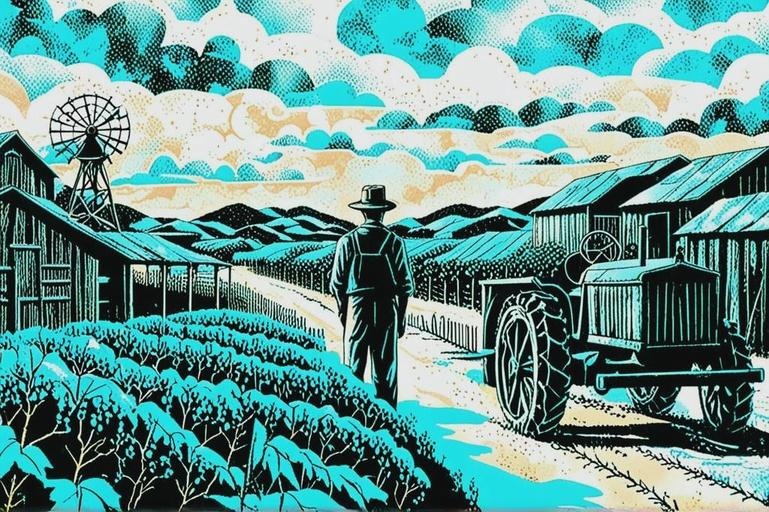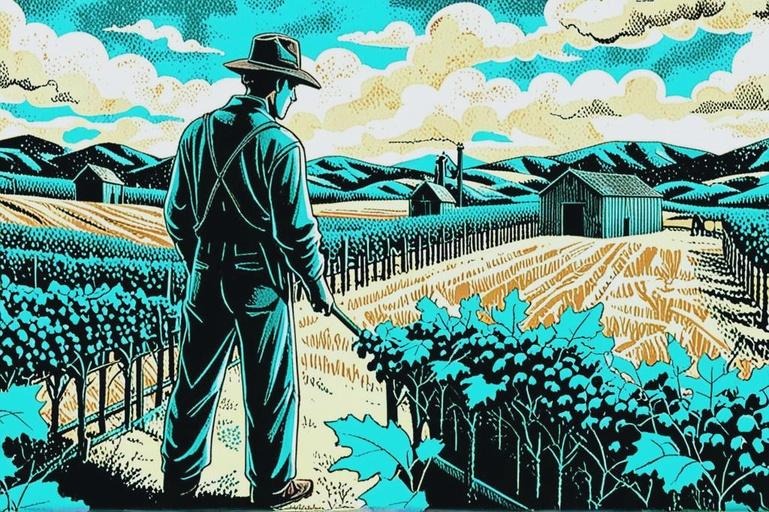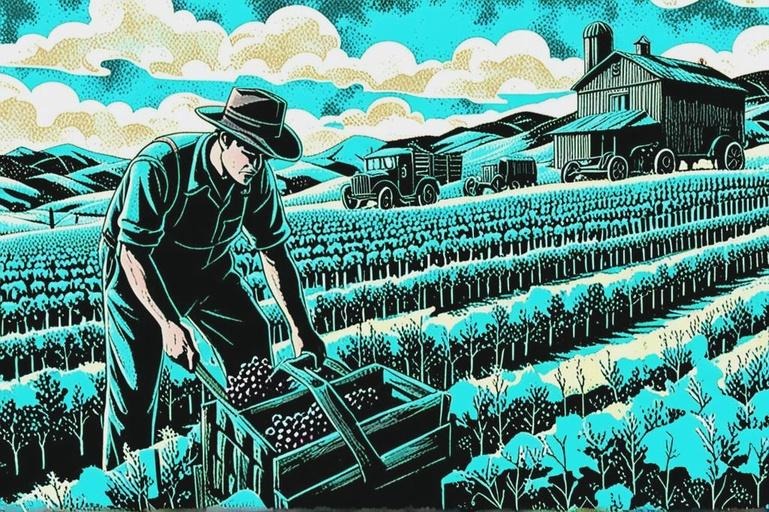This novel is filled with so much misfortune and sorrow that I couldn’t shake off the heaviness even after finishing it.
The economic panic of the 1930s was truly a catastrophic disaster for farmers. Countless farmers lost the land that sustained their lives and were forced into homelessness, a journey fraught with blood, tears, and untold suffering.

Three characters left a deep impression on me: Tom, Grandma, and Mom. Tom is upright, kind, and sincere. He acts on what he believes is right, even if it comes at a cost, and he never bows to evil forces. Tom is loved not only by his family but also by readers like us, though his character might seem somewhat idealized. Grandma is like a mischievous child—stubborn, innocent, and utterly lovable. I absolutely adored her, and her death left me heartbroken for a long time. Mom is the most vividly portrayed character in the novel. Though she is just a homemaker, she is the backbone of the family. She exudes a powerful presence that holds the family together and maintains its dignity. She possesses an extraordinary ability to endure suffering, and no disaster, no matter how great, can break her or her family.
In the American Midwest, countless farmers lost their land and were forced to wander. All they dreamed of was simply having enough to eat and wear, and having a home of their own. Yet even these modest desires were brutally crushed by the harsh realities of life. They couldn’t outsmart the cunning capitalists. The greed and ugliness of the big capitalists are laid bare in this book, but the deeper issue lies in the capitalist system itself. This system sacrifices the interests of the poor to protect the wealth of the capitalists, and this is an inevitable path for capitalist countries to follow, as seen in the British enclosure movement.

One passage in the book left a deep impression: The landowners burned mountains of oranges and grapes and buried many pigs alive, all to maintain the prices of these goods. Meanwhile, countless wanderers starved to death because they had nothing to eat, and even the grapes seemed to grow angry.
When I was a child, I often heard my elders talk about how capitalist countries were extremely wasteful and decadent, pouring out large amounts of milk and burning vast quantities of fruit. Back then, I was quite shocked—wasn’t this a waste of resources? How wasteful these capitalist countries were! But now, thinking about it more carefully, I realize that such actions were often out of necessity. After all, the landowners needed to survive, and without profit, all their hard work would be in vain. So why not give the goods to the poor or sell them cheaply? That, of course, was impossible. Doing so would not only result in a huge loss but also invite criticism and ostracism from their peers. Therefore, no one is a savior; everyone only considers their own interests. To survive, one must rely on oneself.
Perhaps this novel is more about expressing the idea that the poor must unite in times of crisis to overcome their difficulties together. “When you need help, the poor will always reach out to you.” It also praises the resilience of the working people in the face of suffering. This is where the novel touches the hearts of its readers.

In fact, each of us will face numerous hardships in life, and what we can choose is how to confront them. If we can bravely accept suffering, nothing can break us.
Even if we are unfortunate enough to become failures, so what? Life still moves forward, and countless beautiful landscapes are still waiting for us ahead.

 Essays on CLassic
Essays on CLassic


